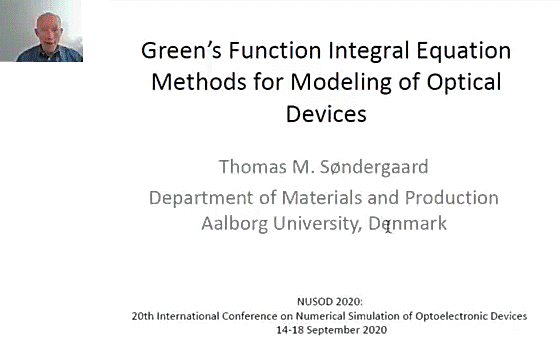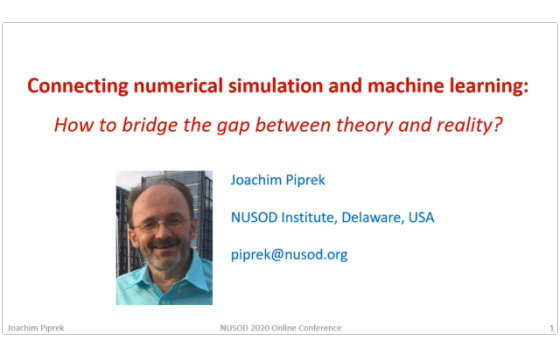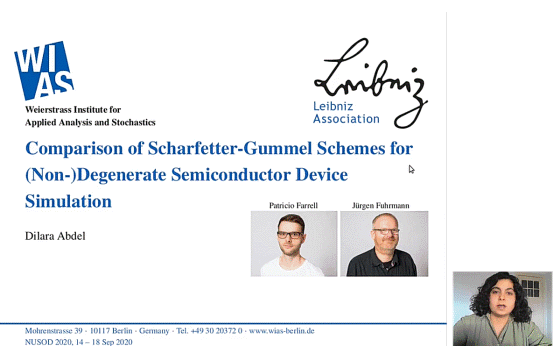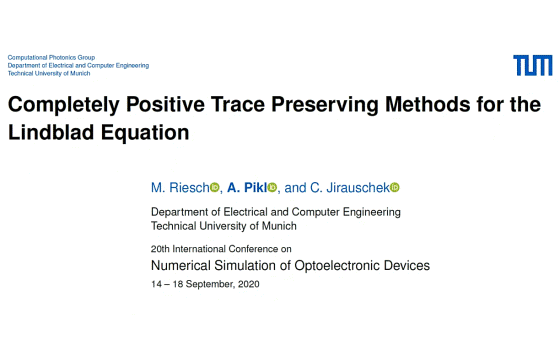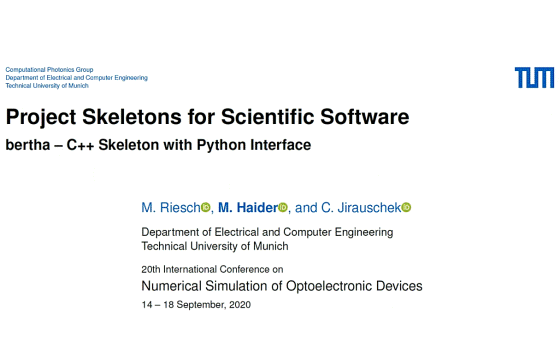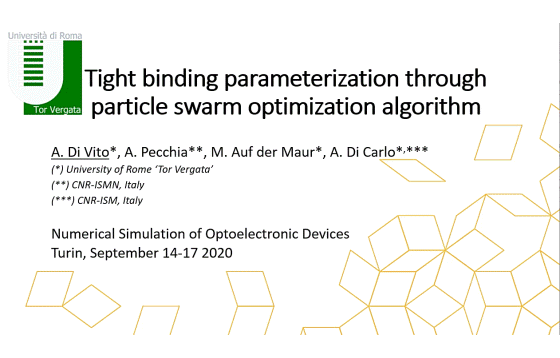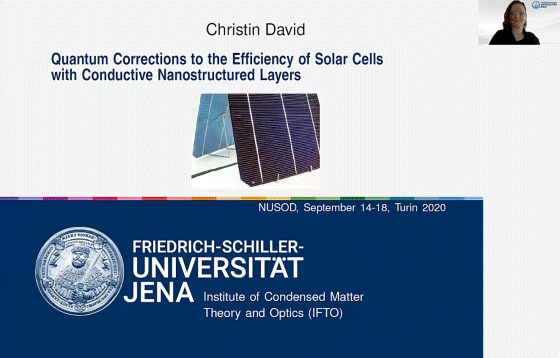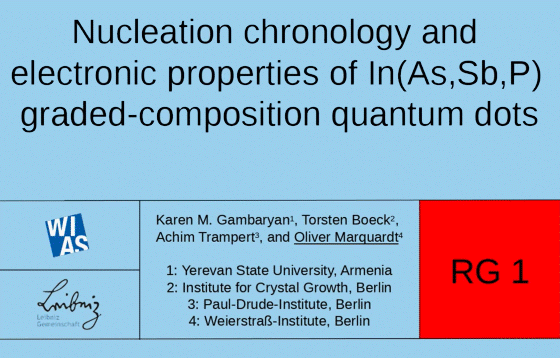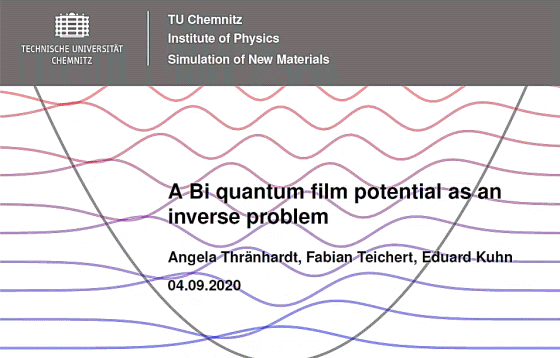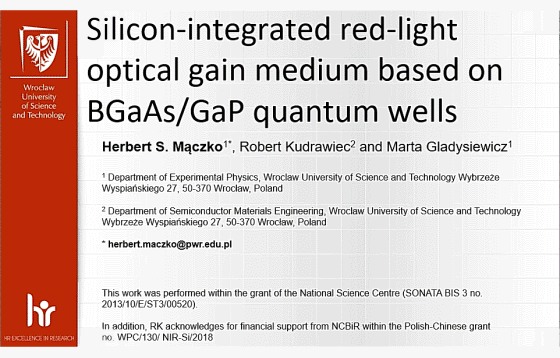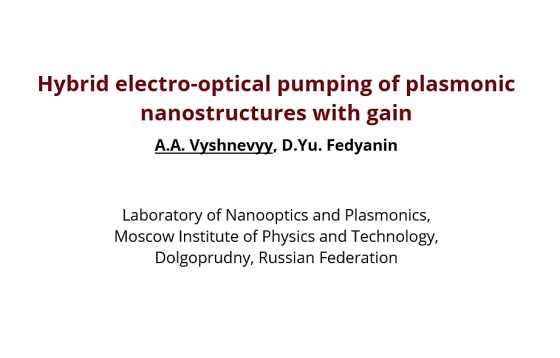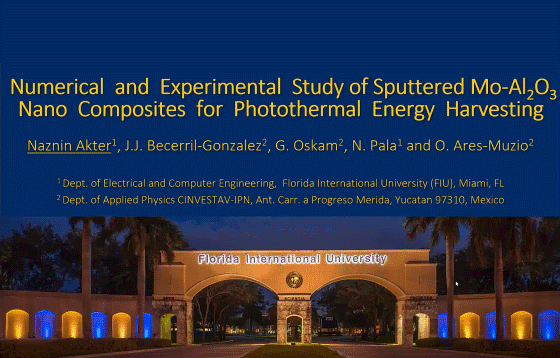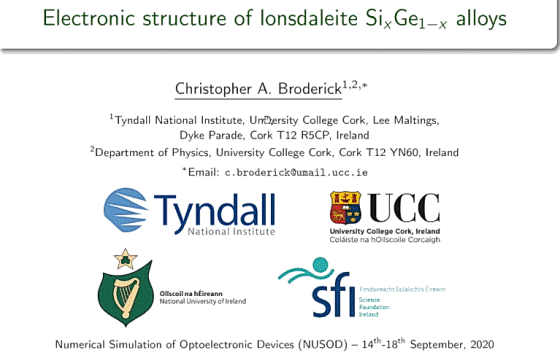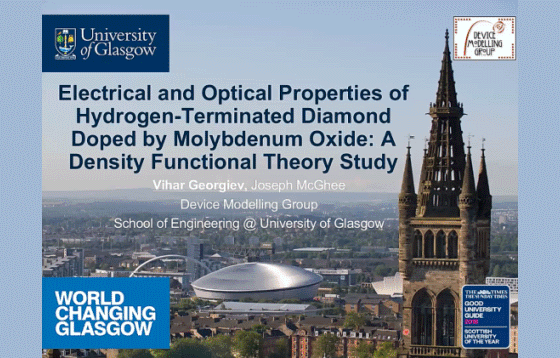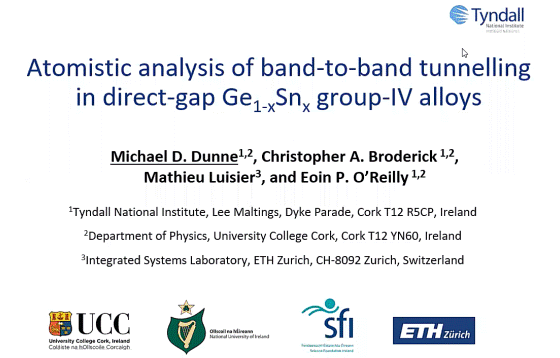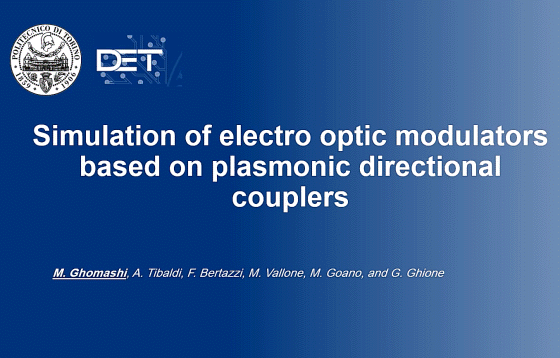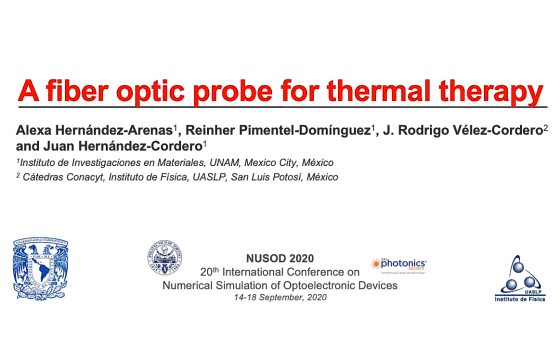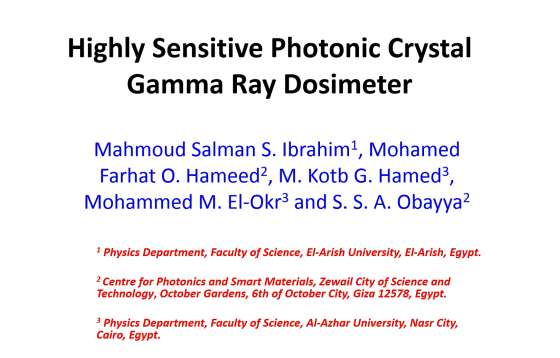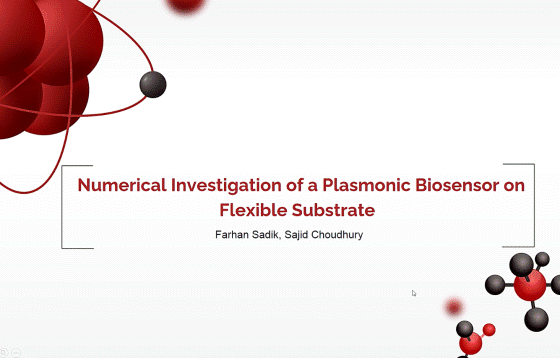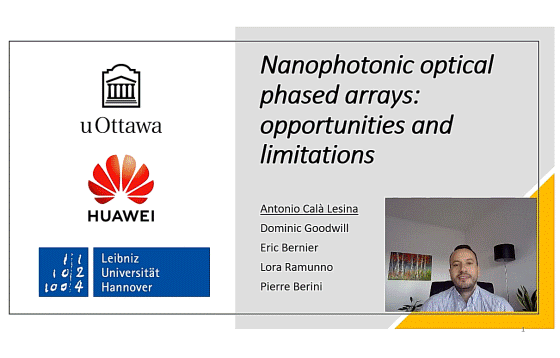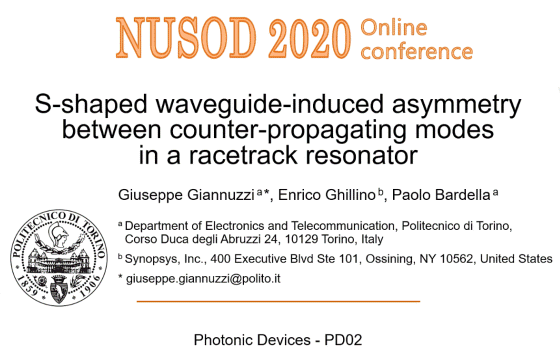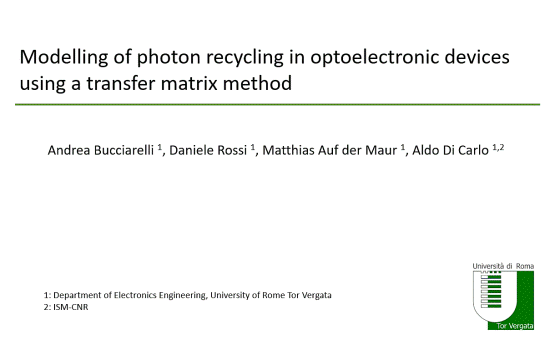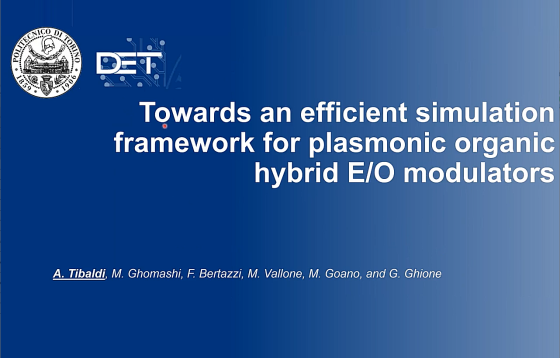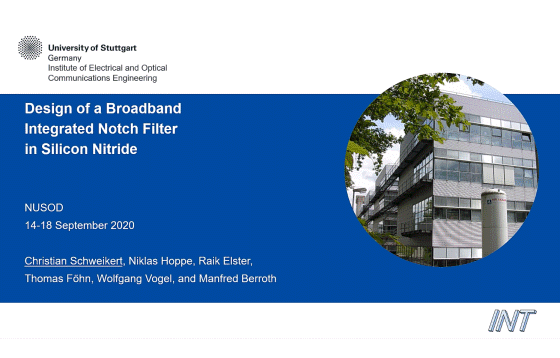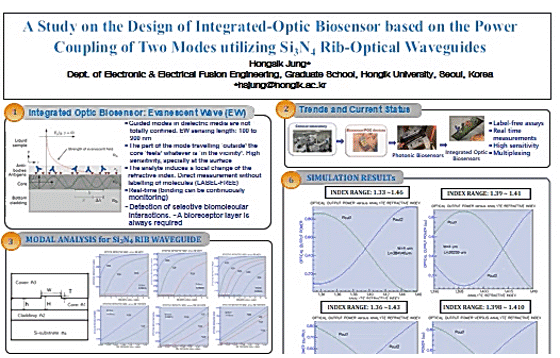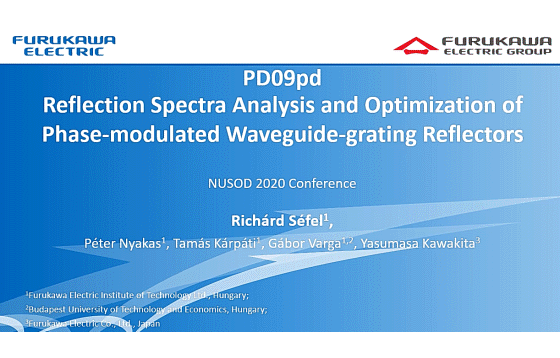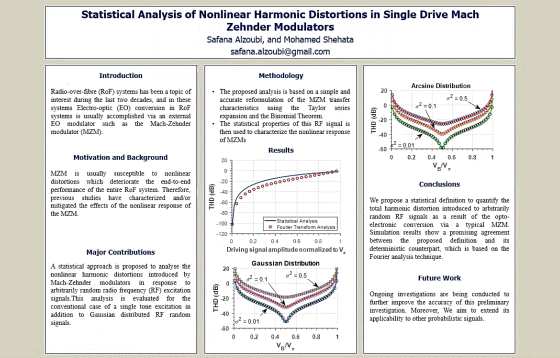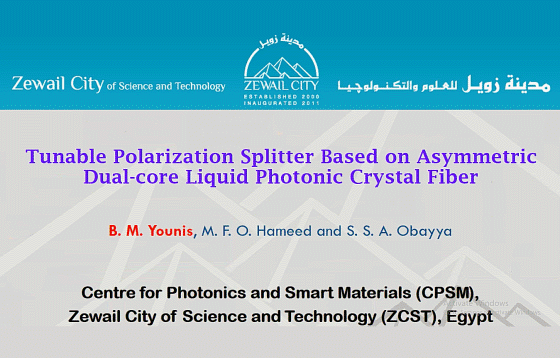


Green’s function integral equation methods are presented that can be applied for modeling of optical devices in cases where the problem can be formulated as a scattering problem. The methods are applied to study in three dimensions the effect of a cylindrical micro-lens on radiation emitted from a THz photoconductive antenna, and for studying the […]
MM02–Connecting numerical simulation and machine learning: How to bridge the gap between theory and reality?
Machine learning and numerical simulation represent opposite approaches to computational analysis of the real world, inductive vs. deductive. However, both methods suffer from various uncertainties and even their combination often fails to link theory and reality. This paper presents a critical review of such connections and proposes improvement options for optoelectronic devices.
MM03–Comparison of Scharfetter-Gummel Schemes for (Non-)Degenerate Semiconductor Device Simulation
We consider Voronoi finite volume schemes for the discretization of the van Roosbroeck system and pay particular attention to the choice of flux approximations. The classical Scharfetter-Gummel scheme yields a thermodynamically consistent numerical flux, but cannot be used for general charge carrier statistics.We compare and analyze aspects of two state-of-the-art modified Scharfetter-Gummel schemes to simulate […]
MM04–Completely Positive Trace Preserving Methods for the Lindblad Equation
The Lindblad master equation is a valuable tool in quantum mechanics, which describes the dynamics of open systems. In the scope of our research, it is combined with the one-dimensional Maxwell’s equations to form the generalized Maxwell-Bloch equations. Since analytical solutions are not available in the general case, numerical methods have to be employed to […]
MM05–Project Skeletons for Scientific Software
Although research relies heavily on software packages such as mathematical libraries or data analysis tools, efforts to provide high-quality scientific software are hardly rewarded. As a possible way out of this dilemma, project skeletons can be employed to accelerate software development while ensuring code quality. In this work, we review existing project skeletons and present […]
MM06–Tight binding parameterization through particle swarm optimization algorithm
The tight binding (TB) approach represents a good trade-off between accuracy and computational burden. For this reason, it is widely used for device simulations. However, a proper description of a physical system by means of TB requires an accurate parameterization of the Hamiltonian matrix elements (HME), that is usually done by fitting over suitable properties […]
N01–Quantum corrections to the efficiency of solar cells with conductive nanostructured layers
It was shown in many experiments that the incorporation of metallic nanostructures into photovoltaic devices results in the enhancement of solar cell efficiency. Most simulations of such devices are based on classical electrodynamics and neglect quantum effects arising from nanosized metallic structures. Here, we look at nonlocal electron-electron interactions, Lorentz friction and strong coupling of […]
N02–Nucleation chronology and electronic properties of In(As,Sb,P) graded-composition quantum dots
We have studied nucleation process and electronic properties of graded-composition quantum dots(GCQDs) grown from In-As-Sb-P in the liquid phase for application in mid-infrared devices like photoresistors or photoconductive cells. The GCQD ensemble exhibits diameters of 10 – 120 nm and heights of 2 – 20 nm. Compositional grading is a typical feature of quantum dots […]
N03–A Bi quantum film potential as an inverse problem
Experiments generally only offer access to certain output parameters or spectra. When performing device simulations, we often assume that agreement of theoretical and experimental output means that the model describes the device well. However, this conclusion is by no means mandatory. Here, we show an example of a Bi quantum film where measurements show equidistant […]
N04–Silicon-Integrated Red-Light Optical Gain Medium Based on BGaAs/GaP Quantum Wells
In this study we present BGaAs/GaP quantum well (QW) structures integrated with GaP/Si virtual substrate as a promising structure for applications requiring red-light optical gain media. Gain spectra are computed based on an 8-band k · p model with an envelope function approximation and Fermi’s Golden Rule. An emission of red light of wavelengths from […]
N05–Hybrid Electro-Optical Pumping of Plasmonic Nanostructures with Gain
We propose to pump active plasmonic devices, such as plasmonic amplifiers, lossless plasmonic waveguides and nanolasers, simultaneously electrically and optically (hybrid pumping). We show that such a pumping method results not only in a higher modal gain but also in an improved control over the spatial profile of optical gain in the device, which allows […]
N06–Hybrid Electro-Optical Pumping of Plasmonic Nanostructures with Gain
We report on the numerical and experimental study of the optical spectra of Mo-Al2O3 nanocomposites that were grown using sequential DC and RF sputtering. The measured spectra were compared with the ones calculated using FDTD simulations to analyze the prediction accuracy of the approach.
NM01–Ferrimagnetic garnets for integrated non-reciprocal devices
Ferrimagnetic garnets are promising materials for applications in integrated non-reciprocal devices due to their low optical absorption and relatively large magneto-optical response at telecommunication wavelengths. However, their implementation into phonotic chips is rather difficult due to large lattice parameters and thermal expansion mismatch with common photonic substrates. In this talk, we present our latest progress […]
NM02–Electronic structure of lonsdaleite SiGe alloys
Conventional diamond-structured silicon (Si) and germanium (Ge) possess indirect fundamental band gaps, limiting their potential for applications in light-emitting devices. However, SixGe1-x alloys grown in the lonsdaleite (“hexagonal diamond”) phase have recently emerged as a promising direct gap, Si-compatible material system, with experimental measurements demonstrating strong room temperature photoluminescence. When grown in the lonsdaleite phase, […]
NM03–Electronic and Optical Properties of Hydrogen-Terminated Diamond Doped by Molybdenum Oxide: A Density Functional Theory Study
In this work we investigate the surface transfer doping process induced between a hydrogen-terminated (100) diamond and a metal oxide MoO3, using the Density Functional Theory (DFT) method. Using DFT, we have calculated the electronic and optical properties of the hydrogen-terminated diamond and established a link between the underlying electronic structure and the charge transfer […]
NM04–Atomistic analysis of band-to-band tunnelling in direct-gap GeSn group-IV alloys
The emergence of a direct band gap in Ge1-xSnx alloys has stimulated interest in developing Ge1-xSnx alloys and nanostructures for applications in Si-compatible electronic and photonic devices. The direct band gap of Ge1-xSnx, combined with the strong band gap reduction associated with Sn incorporation, makes Ge1-xSnx a promising material system for the development of Si-compatible […]
NM05–Simulation of electro optic modulators based on plasmonic directional couplers
In this paper, a new concept and geometry are proposed for plasmonic modulators, whose operation is based on the coupling between two plasmonic slots. An electro-optic polymer is exploited as an active material, and the device can be implemented within a Silicon Photonics platform. The device operates at 1550nm wavelength, typical of data center or […]
NM09–A fiber optic probe for thermal therapy
We demonstrate a novel fiber optic device for controlled generation of photothermal effects. The fiber probe is pumped by a laser diode and incorporates polymer composites allowing to generate highly localized heat and obtain temperature measurements simultaneously. We analyze the temperature field in the vicinity of the device through computer simulations and these are validated […]
NM10–Highly Sensitive Photonic Crystal Gamma Ray Dosimeter
Highly sensitive 2D Si photonic crystal (PhC) sensor is proposed and analyzed for the detection of gamma-ray doses in the visible light region. The suggested PhC has a cavity infiltrated by poly-vinyl alcohol (PVA) polymer doped with crystal violet and carbol fuchsine dyes. The geometrical parameters of the design are studied to maximize the sensor […]
NM11–Numerical Investigation of a Plasmonic Biosensor on Flexible Substrate
Surface plasmon resonance (SPR) based sensors are state of the art in bio-sensing. Here we numerically inspect a device that can induce SPR on the opposite side of planar metal films. The evanescent field of SPR can detect wide of refractive index with linear sensitivity. This device modeled on bendable PDMS substrate can launch SPR […]
PD01–Nanophotonic optical phased arrays: opportunities and limitations
Optical phased arrays can steer a beam without mechanical rotation, thus achieving a very rapid scanning rate. The core element of an optical phased array is the pixel (unit cell) and its ability to control the phase and amplitude of the emitted/scattered light. We discuss the role of nanophotonics in achieving pixels that are small […]
PD02–S-shaped waveguide-induced asymmetry between counter-propagating modes in a racetrack resonator
Ongoing progress in photonic integrated circuits necessitates the integration of semiconductor ring lasers (SRLs) with high performance and predictable behavior, which can be achieved when the symmetry of the SRL, which supports both clockwise and counterclockwise beam propagation, is unbalanced through loss mechanisms inside the resonator. In this work, numerical simulations were carried out on […]
PD03–Modelling of photon recycling in optoelectronic devices using a transfer matrix method
In this work we present a generalized transfer matrix method to study the effect of the photon recycling on the performance of solar cells. Photon recycling increases the charge carrier concentration in solar cells, resulting in an increase of the open circuit voltage (Voc). The model is based on the transfer matrix method (TMM), taking […]
PD04–Towards an efficient simulation framework for plasmonic organic hybrid E/O modulators
Due to the large computational resources required, with CPU times of the order of several days, full-wave optical simulators can be hardly exploited for the modeling and optimization of plasmonic organic hybrid electro/optic modulators. With the aim to drastically reduce such complexity, in this work we present a divide-et-impera strategy reducing the number of FDTD […]
PD05–Design of a Broadband Integrated Notch Filter in Silicon Nitride
A broadband integrated notch filter, using the silicon nitride (Si3N4) platform, is presented. It achieves an extinction ratio (ER) of 60 dB and a full width at half maximum (FWHM) of 10 nm at the central wavelength (CW) 785 nm. The main filter components are Bragg gratings (BGs). For separating the occurring reflections from the […]
PD06–A Study on the Design of Integrated-Optic Biosensor based on the Power Coupling of Two Modes utilizing Si3N4 Rib-Optical Waveguides
We proposed an integrated-optical biosensor configuration that operates at a wavelength of 0.63 μm based on the evanescent-wave and lateral two-mode power coupling of Si3N4 rib-optical waveguides formed on a Si/SiO2/Si3N4/SiO2 multilayer thin films. The coupling between the two propagating modes in the sensing region produces a periodically repeated optical power exchange along the propagation. […]
PD08–Supercontinuum generation with superior intrapulsecoherence in dispersion-tailored waveguides
Intrapulse coherence is an important performance metric for applications of supercontinua, including precision frequency metrology and attosecond science. These applications require a stable carrier-envelope phase, which is usually measured by f–2f interferometry. Here, the potential for superior intrapulse coherence with 100 and 400-fs input pulses is studied, exploiting different dispersion profiles. The simulation results in […]
PD09–Reflection Spectra Analysis and Optimization of Phase-modulated Waveguide-grating Reflectors
Phase-modulated waveguide gratings are promising reflective optical elements for widely tunable laser applications. We present an analysis on their comb-like reflectivity response and address the impact of phase-shifts on the number of large reflection peaks, their envelope and on the effective grating coefficient. Utilizing a robust phase-modulation approach, this paper shows a quasi-stochastic numerical optimization […]
PD10–Statistical Analysis of Nonlinear Harmonic Distortions in Single Drive Mach Zhender Modulators
In this preliminary investigation, a statistical approach is proposed to analyze the nonlinear harmonic distortions introduced by Mach-Zehnder modulators (MZMs) in response to arbitrarily random radio frequency (RF) excitation signals. The proposed analysis is based on a simple and accurate reformulation of the MZM transfer characteristics using the Taylor series expansion and the Binomial Theorem. […]
PD11–Tunable Polarization Splitter Based on Asymmetric Dual-core Liquid Photonic Crystal Fiber
An asymmetric dual core photonic crystal fiber (ADC-PCF) tunable polarization splitter is reported and analyzed. The left core of the DC-PCF is infiltrated with nematic liquid crystal (NLC) material to control the wavelength at which coupling occurs between the dual cores of the proposed structure. Moreover, the suggested design can be tuned to split out […]

